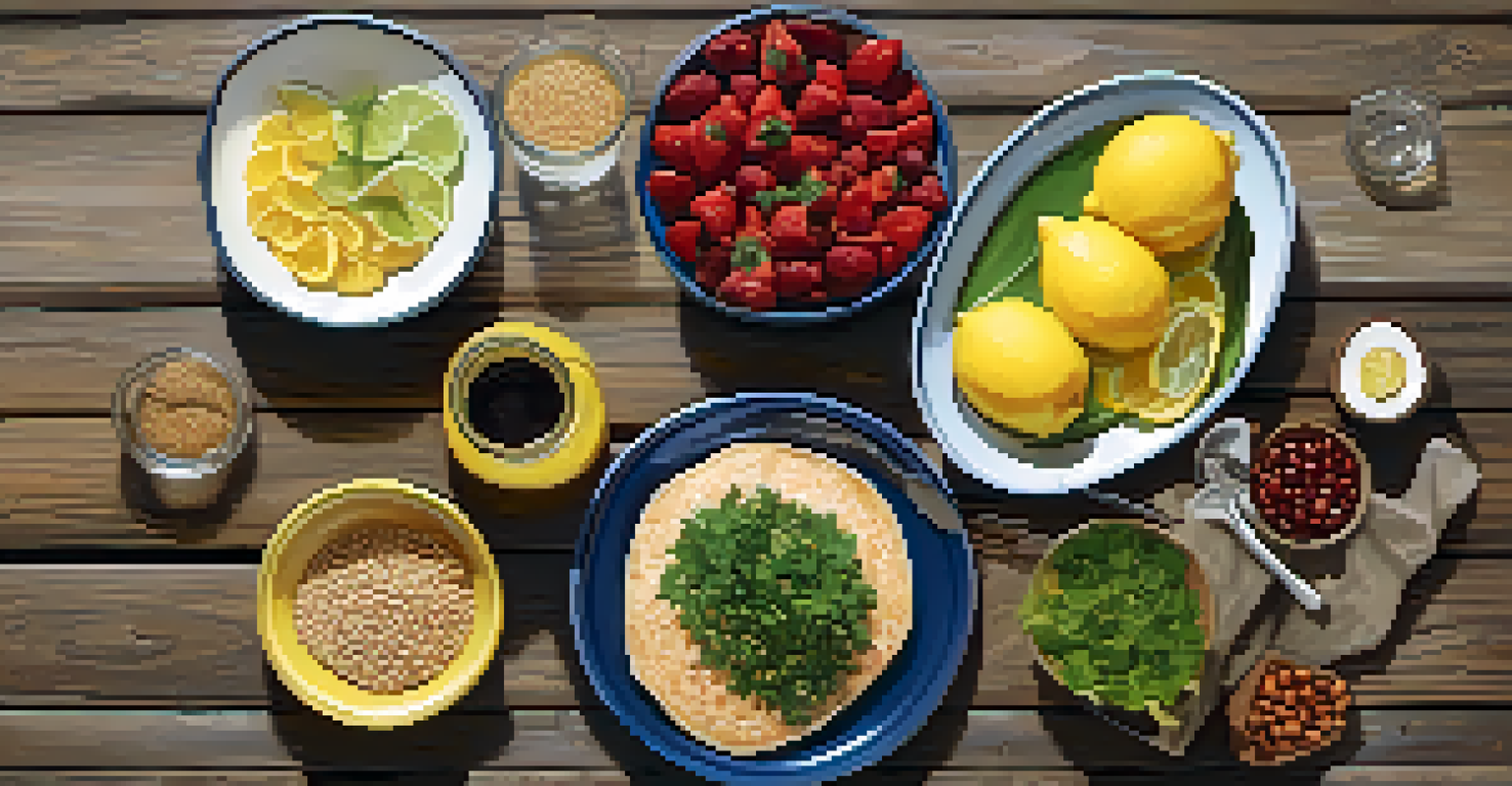The Impact of Nutrition on Dance Injury Prevention

Understanding the Connection Between Nutrition and Dance
Nutrition plays a crucial role in a dancer's performance and overall health. Just like a car needs fuel to run smoothly, dancers require the right nutrients to support their physical demands. Proper nutrition not only enhances performance but also aids in recovery and injury prevention.
Let food be thy medicine and medicine be thy food.
When dancers consume a balanced diet rich in carbohydrates, proteins, and healthy fats, they provide their bodies with the essential building blocks needed for energy and muscle repair. Imagine your body as a finely tuned machine; without the right fuel, it won’t function optimally. This is why understanding nutrition is key for any dancer.
Furthermore, a well-nourished body can better withstand the stresses of dance training. It’s not just about what you eat before a performance; it’s about creating a foundation that supports longevity in your dance career.
The Role of Macronutrients in Injury Prevention
Macronutrients—carbohydrates, proteins, and fats—are vital for a dancer's energy levels and muscle health. Carbohydrates are especially important as they provide the necessary fuel for high-intensity movements during dance. Think of them as the quick energy source that keeps dancers moving gracefully across the stage.

Proteins are crucial for muscle repair and recovery, helping to rebuild tissue after rigorous dance sessions. Consuming adequate protein helps ensure that dancers can bounce back quickly, preventing overuse injuries that can occur due to fatigue. It’s like patching up a worn-out tire; without proper care, it could lead to bigger problems.
Nutrition Fuels Dance Performance
Proper nutrition provides dancers with the essential energy and nutrients needed for optimal performance and recovery.
Healthy fats, on the other hand, support joint health and hormone production. Including sources like avocados, nuts, and olive oil in a dancer’s diet can provide the necessary nutrients to keep joints lubricated and functioning smoothly, reducing the risk of injury.
Micronutrients: The Unsung Heroes of Dance Nutrition
While macronutrients get a lot of attention, micronutrients—vitamins and minerals—are equally important in preventing injuries. These tiny nutrients help maintain bone health and support muscle function. For instance, calcium and vitamin D are essential for strong bones, which are crucial for dancers who put a lot of stress on their bodies.
You are what you eat, so don’t be fast, cheap, easy, or fake.
Iron is another key player, as it helps transport oxygen to muscles. If a dancer is low on iron, they may experience fatigue and decreased performance, making them more susceptible to injuries. It’s like trying to run a marathon on empty—eventually, the body will give out.
Incorporating a variety of colorful fruits and vegetables into meals can help ensure a dancer gets a broad spectrum of micronutrients. Think of it as eating the rainbow; the more colors on your plate, the more nutrients you’re likely to consume, supporting overall health.
Hydration: A Critical Component of Dance Nutrition
Staying hydrated is often overlooked but is crucial for injury prevention in dancers. Dehydration can lead to muscle cramps, decreased performance, and even increased injury risk. Just like a plant wilts without water, dancers can struggle to perform at their best without proper hydration.
During intense rehearsals or performances, dancers lose fluids through sweat. It’s essential to replenish those fluids to maintain optimal performance levels. Carrying a water bottle and sipping throughout the day can make a significant difference—think of it as keeping your body’s engine cool.
Hydration is Key for Injury Prevention
Staying hydrated helps prevent muscle cramps and maintains performance levels during intense dance sessions.
Moreover, electrolytes play an important role in hydration. Consuming drinks that replenish lost electrolytes can help dancers avoid fatigue and cramping, ensuring they stay in top shape and ready to move.
Meal Timing: Fueling Your Body for Performance
The timing of meals can significantly impact a dancer’s energy levels and performance. Eating a well-balanced meal a few hours before dancing can provide the necessary energy to perform at peak levels. It’s like charging your phone before a long day; you wouldn’t want to head out with a low battery.
Additionally, consuming a small snack rich in carbohydrates and protein after practice can aid recovery. This post-dance refueling helps replenish glycogen stores and repair muscles, making it essential for injury prevention. Think of it as giving your body a well-deserved treat after a hard workout.
Dancers should also be mindful of their meals leading up to performances. Eating too close to showtime can lead to discomfort, while a well-timed meal can boost confidence and energy levels, ultimately enhancing performance.
The Importance of Individualized Nutrition Plans
Every dancer is unique, and so are their nutritional needs. Factors such as body type, dance style, and training intensity all play a role in determining what a dancer should eat. This is why individualized nutrition plans are vital for optimal performance and injury prevention.
Working with a sports nutritionist can help dancers create a tailored plan that meets their specific needs. It’s like having a custom-made costume; it fits perfectly and enhances performance. A personalized approach ensures that dancers are fueling their bodies in a way that works for them.
Individualized Nutrition Plans Matter
Tailoring nutrition plans to each dancer's unique needs enhances performance and supports injury prevention.
Moreover, understanding personal dietary preferences and any potential allergies can make a significant difference. A plan that accommodates individual tastes will be much easier to stick to, leading to better results over time.
Putting It All Together: A Holistic Approach to Nutrition
To effectively prevent injuries, dancers need to adopt a holistic approach to nutrition. This means considering not only what they eat but also when they eat, how much they hydrate, and how they recover. A well-rounded approach ensures that all aspects of a dancer’s health are addressed.
Incorporating a variety of foods, maintaining hydration, and timing meals appropriately creates a supportive environment for dance training. It’s similar to creating a balanced routine that includes practice, rest, and recovery—every piece plays a vital role in success.

Ultimately, prioritizing nutrition can lead to enhanced performance, reduced injury risk, and a longer, healthier dance career. By treating nutrition as a foundational element of their training, dancers can truly shine in their art.